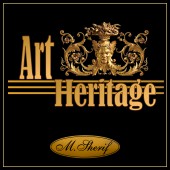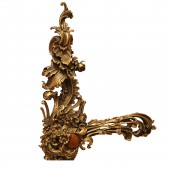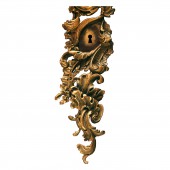DESIGN NAME:
Royal Handle
PRIMARY FUNCTION:
Door Handle
INSPIRATION:
Eng. Mohamed Sherif’s creative design for the handle moves Art Nouveau to a further step by harmonizing Art Nouveau (a generally avoided style by designers for its repetitive and monotonous lines) with general European lines. The design for the handle grip was inspired by the Art Nouveau style, which is mainly characterized by excessive and repetitive flowing lines. Eng. Mohamed managed to blend in the general European style of the plate design with the Art Nouveau grip in a beautiful harmony that liberated the whole art work design from other conventional and traditional designs.
UNIQUE PROPERTIES / PROJECT DESCRIPTION:
This door handle is designed by Eng. Mohamed Sherif, Art Heritage C.E.O. and chief designer and manufactured in the company's factory. The handle grip represents the core elements of the Art Nouveau style philosophy; the curved lines and natural elements. This design is exceptional in terms of both artistic lines and usability; the floral and foliage shapes of the handle plate are of a general European design; blended with the Art Nouveau style of the grip, Eng. Mohamed intended to create this special design generation in order to avoid excessive repetition of the Art Nouveau lines. The handle lines flow in different directions yet are harmonious, additionally the grip center is ornamented with a precious stone. The handle grip is very comfortable to hold as the upper and lower curves perfectly match the palm in a loose grip. The design is singular from all aspects; the proportionate and precise definition of the lines make each element speaks of itself while at the same time completes other elements and serves the whole design. The handle is made of brass, first carved in wax and cast in the lost wax casting method.
OPERATION / FLOW / INTERACTION:
The door handle operating mechanism is traditional in terms of its installation with the lock case. The door handle spring maintains its upright position and the washer prevents friction in movement and ensures durability. The diameter and design of the handle grip is palm friendly; it is designed for optimum comfort.
PROJECT DURATION AND LOCATION:
Eng. Mohamed started the design of the Royal Handle in January 2008 and completed his art work design in 3 weeks. The design process took place at Art Heritage. It took 2 months to carve the wax model and two weeks to complete all remaining production phases of the first piece.
The Royal Handle was exhibited in Decofair 2014, the Premium International Furniture and Interior Design Show.
|
PRODUCTION / REALIZATION TECHNOLOGY:
The entire handle plate and grip is made of brass or bronze in the lost wax casting method. Initially, the design is realized in hand carved wax model then placed in the casting cylinder mold. Next to that, a heat resistant core is poured into the cylinder to form a shell. Wax is then melted to be replaced by the molten brass or bronze. After the whole process is complete, the shell is removed and the handle is ready to be precisely refined afterwards. The final stage is of high importance, as the handle is fully finished in details. Finally a selection is made whether the handle is gold plated or given an antique patina texture.
SPECIFICATIONS / TECHNICAL PROPERTIES:
The handle height is 50 centimeters, the handle is extremely rich in curves and flowing shapes; its maximum width, around the plate center, is 8 centimeters and the minimum is at both ends at less than 1 centimeter wide. The plate thickness is around 1.5 centimeter while the complete handle’s thickness is 5.5 centimeters. The grip length is 21 centimeters and its lines extend and contract to reach 7 centimeters maximum width and 2.5 minimum width.
TAGS:
Art Nouveau, Door Handle, Lost Wax Casting, Handle,
RESEARCH ABSTRACT:
Art Nouveau, the inspiration style for the Royal Handle grip, is an international philosophy and style of art -architecture and applied- that was most popular during 1890–1910. English uses the French name Art Nouveau ("new art"), but the style has many different names in other countries. A reaction to academic art of the 19th century, it was inspired by natural forms and structures, not only in flowers and plants, but also in curved lines. Architects tried to harmonize with the natural environment. Although Art Nouveau was replaced by 20th-century Modernist styles. it is now considered as an important transition between the eclectic historic revival styles of the 19th-century and Modernism. The Royal Handle plate was inspired by the general European lines. The floral shapes along with the flowing leaves are common elements in the classic styles from the 14th to the 19th century. The proportionate measurements in the curved lines were a main focus in the design process.
CHALLENGE:
The biggest design challenge was the blending of styles to reach a harmonious result. Art Nouveau style, as in the handle’s grip, is characterized by its repetitive and flowing lines while the handle’s plate is inspired by the general European design styles. Being able to blend the two design styles and coming up with an artistic work of art was a challenge.
Another obstacle that was overcome in the realization process, was the high standard of precision applied in the production of high accuracy and fine undercut carving of small items; this level is applied on much larger items.
ADDED DATE:
2015-02-26 19:19:23
TEAM MEMBERS (1) :
IMAGE CREDITS:
Mohamed Amin Sherif, 2014.
|










